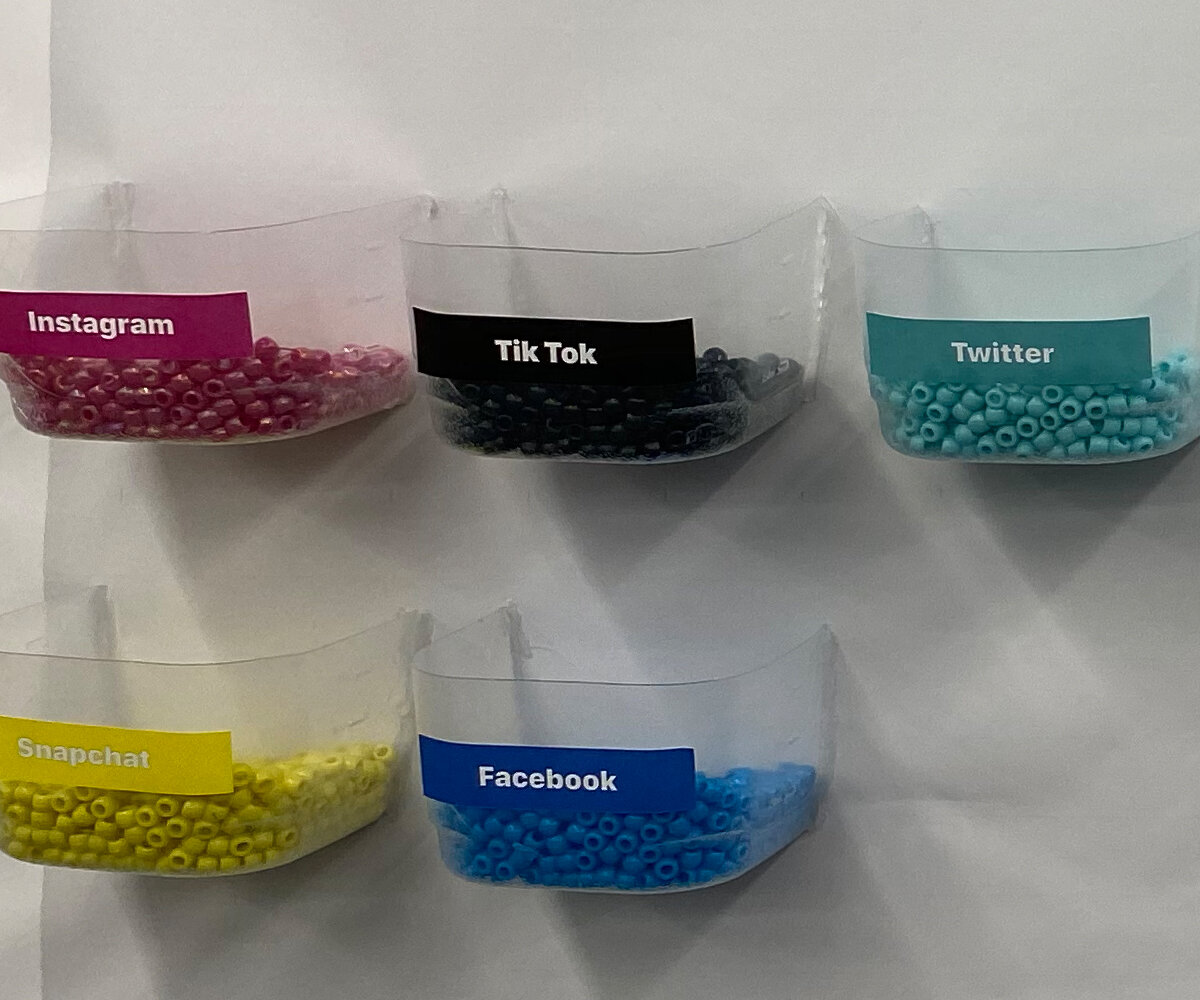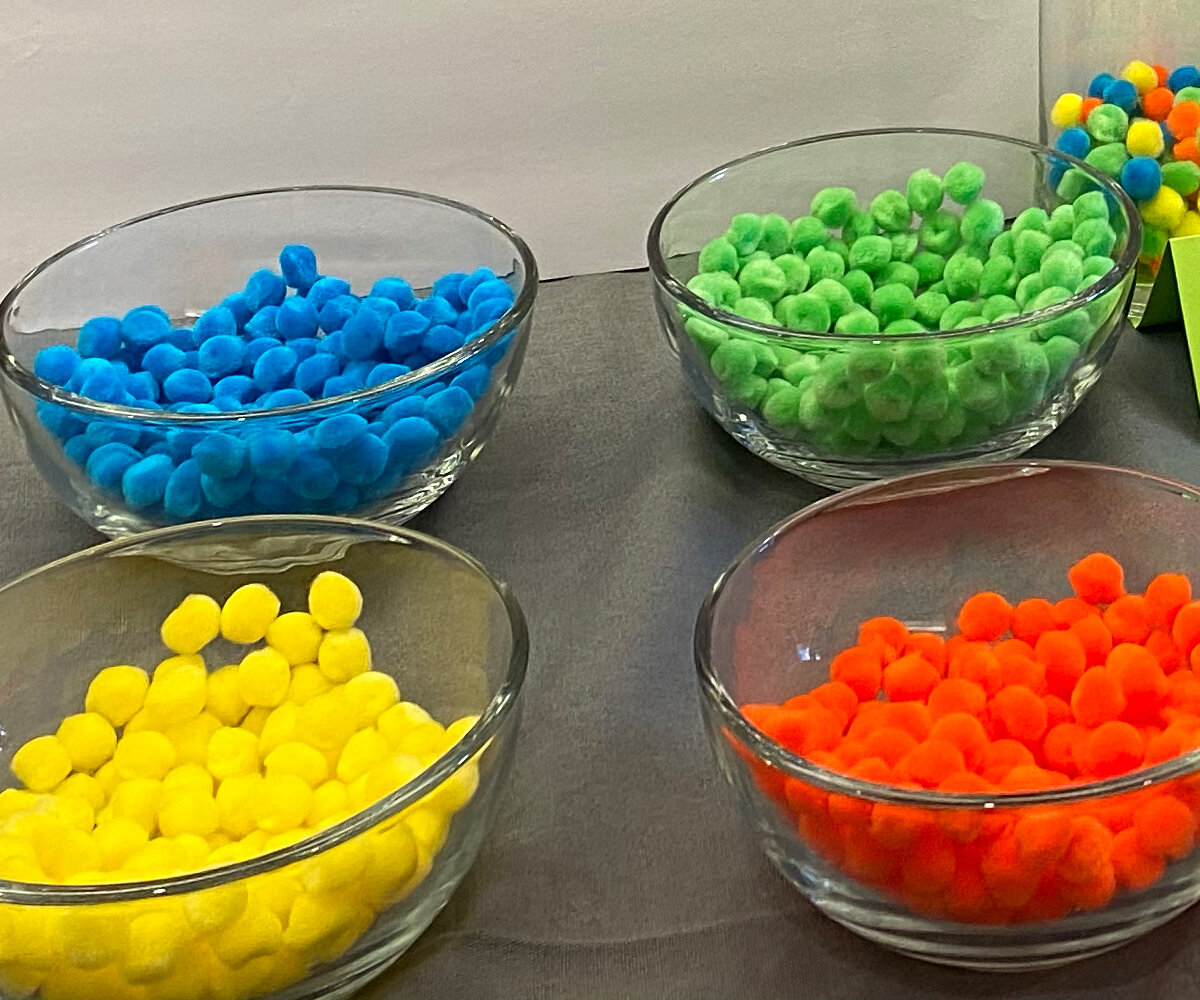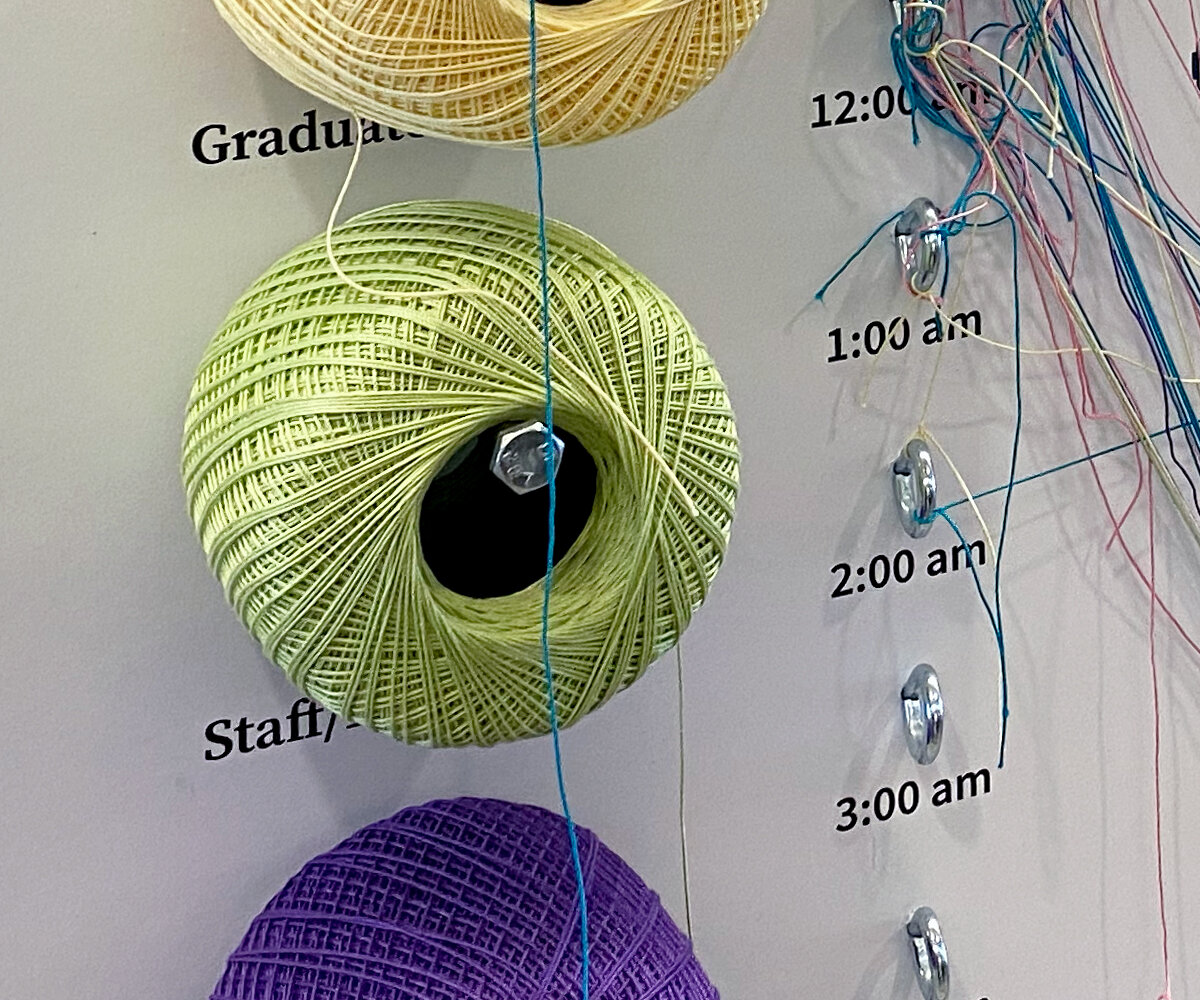The use of surveys in assessment and institutional research continues to increase. The survey nonresponse rate has also been increased both in the United States and internationally (Assessing the Representativeness of Public Opinion Surveys | Pew Research Center, n.d.; Porter et al., 2004). A major cause of the survey nonresponse is that survey respondents become overwhelmed by the number of surveys they encounter and thus become fatigued. Consequently, researchers receive lower participation rate, and incomplete or inaccurate survey results (Porter et al., 2004).
As designers, how might we use creative and engaging ways of conducting survey and collecting information from target audiences in order to understand them and their viewpoints?
Visual Communication Design students of DESIGN 4153 (Information Design) experimented with using tangible objects in public display to collect data from a large number of audiences. People are able to give or take for the purpose of contributing to the data collection. Students also investigated how physical representations of data – data physicalizations – can support communicating, collecting, and learning information relates to life on campus.
In these high-traffic public areas, people around campus can easily engage by polling and contributing to the data collection in fun and interactive ways. The survey results are also immediately demonstrated to the public through the visual display. The physical structures reflect various visualization techniques such as bar graph, parallel coordinates, dot plot, and heatmap. Students used diverse craft materials and methods of participant interactions to encourage audience engagement and provoke thoughts and discussions on topics such as self-care, usage of social media, social connections of people of various identities, the hurry culture, and an ideal night of sleep.
How these issues impact our quality of life and how we may positively influence ourselves towards greater livability is what we are interested in learning through these installations.
At Hagerty Hall: (left) What an Idea Night of Sleep Look Like for You? Created by Amber Lanese, Ethan Newburger, and Ava Berzinsky. (right) Constantly In a Hurry? Created by Tira DiYanni, Christine Stankiewicz, and Claire Spicer.
At the Fine Arts Library entrance: (left) How Does Your Feed Make You Feel? Created by Sarah Martin, Dana Niehaus, and Nicholas Pentony. (right) Tell Us About the People in Your Life Created by Nick Romanowski and Sherry Xiao.
At the Fine Arts Library entrance: What is Self-care to You? Created by Sagul Ali, Nadja Dewberry, and Lily Li.
Yvette Shen is an Assistant Professor of Visual Communication Design in the Department of Design at The Ohio State University. Before joining academia, she worked as an interactive designer closely collaborating with people in professional industries such as healthcare, automotive, arts and entertainment, as well as in non-profit organizations. Her current creative and research expertise mainly lies in the field of information design and information visualization. In particularly, how design can help people gain better understanding of complex information and increase their interest in learning more; and how the practice of visualization and user experience may empower people with positive behaviors and emotions. She values the importance of an interdisciplinary problem-solving process of exploring and providing functional, creative, and human-centered design solutions to complex problems. In her own creative and research work, Yvette intends to identify innovative solutions based on the convergence of art, design, science, and technology, in order to leverage the considerations of social and health issues, and cultural heritage.
For more information of her classes, research and creative work, please visit https://designviz.osu.edu/






